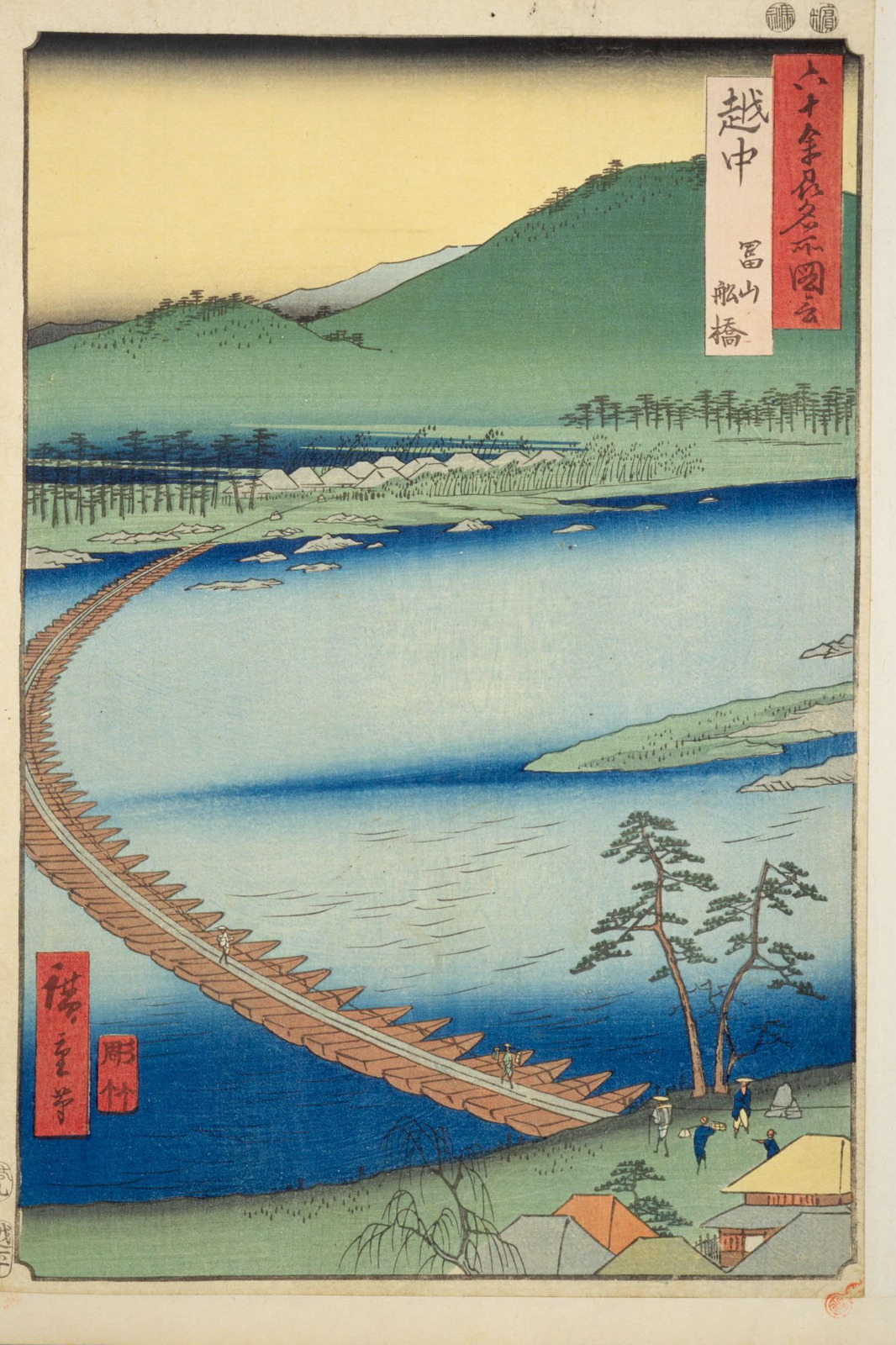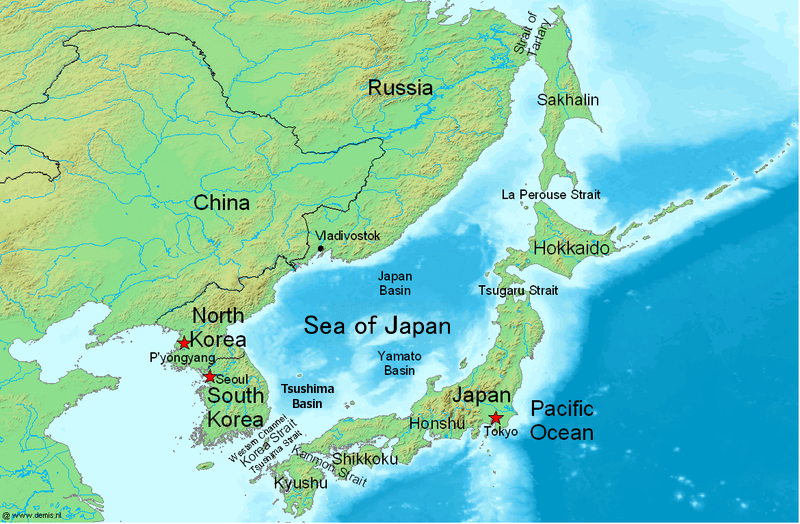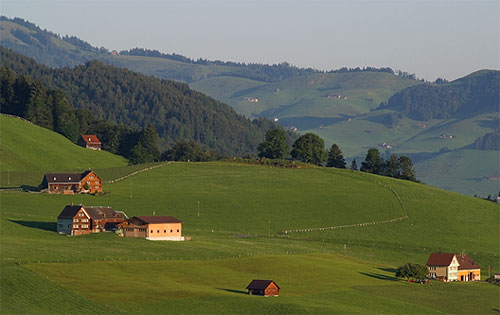|
Takaoka, Toyama
is a city in the northwestern portion of Toyama Prefecture, Japan. Takaoka has the second largest population after Toyama City, and the city is a center of western Toyama Prefecture (''Gosei''). , the city had an estimated population of 173,086 in 68,350 households and a population density of 819 persons per km2. Its total area was . Geography Takaoka covers an area which equates to roughly 5% of the surface area of Toyama Prefecture. The surface area of the city comprises 36.96 km2 of real estate, 61.02 km2 of agricultural land, 22.69 km2 of mountains and forests, 80.43 km2 of public property (parks etc.), 6.10 km2 of wasteland, and 2.18 km2 of moorland. Takaoka borders four cities in Toyama Prefecture ( Himi, Oyabe, Tonami, and Imizu) and two towns in Ishikawa Prefecture ( Tsubata and Hōdatsushimizu). From its border with Himi down to the southwest area of the city, a range of mountains stretch for roughly 150 m to 300 m with a particularly ... [...More Info...] [...Related Items...] OR: [Wikipedia] [Google] [Baidu] |
Cities Of Japan
A is a local Public administration, administrative unit in Japan. Cities are ranked on the same level as and , with the difference that they are not a component of . Like other contemporary administrative units, they are defined by the Local Autonomy Law of 1947. City status Article 8 of the Local Autonomy Law sets the following conditions for a municipality to be designated as a city: *Population must generally be 50,000 or greater (原則として人口5万人以上) *At least 60% of households must be established in a central urban area (中心市街地の戸数が全戸数の6割以上) *At least 60% of households must be employed in commerce, industry or other urban occupations (商工業等の都市的業態に従事する世帯人口が全人口の6割以上) *Any other conditions set by prefectural ordinance must be satisfied (他に当該都道府県の条例で定める要件を満たしていること) The designation is approved by the prefectural governor and t ... [...More Info...] [...Related Items...] OR: [Wikipedia] [Google] [Baidu] |
Oyabe, Toyama
is a city in Toyama Prefecture, Japan. , the city had an estimated population of 30,328 in 10,331 households. and a population density of 230 persons per km2. Its total area was . Geography Oyabe is in the Tonami flatlands of far western Toyama Prefecture, and is bordered by Ishikawa Prefecture to the west. Much of the area is a dispersed settlement typical of this region of Japan. Oyabe has a humid continental climate (Köppen ''Cfa'') characterized by mild summers and cold winters with heavy snowfall. The average annual temperature in Oyabe is 14.0 °C. The average annual rainfall is 2454 mm with September as the wettest month. The temperatures are highest on average in August, at around 26.7 °C, and lowest in January, at around 2.7 °C. Surrounding municipalities *Ishikawa Prefecture ** Kanazawa ** Tsubata *Toyama Prefecture ** Nanto ** Takaoka ** Tonami Demographics Per Japanese census data, the population of Oyabe has declined in recent decades. Hi ... [...More Info...] [...Related Items...] OR: [Wikipedia] [Google] [Baidu] |
Ōtomo No Yakamochi
was a Japanese people, Japanese statesman and ''waka (poetry), waka'' poet in the Nara period. He was one of the ''Man'yō no Go-taika,'' the five great poets of his time, and was part of Fujiwara no Kintō's . Yakamochi was a member of the prestigious Ōtomo clan. Like his grandfather and father before him, Yakamochi was a well-known politician, and by Enryaku rose to the position of , his highest bureaucratic position. Biography Yakamochi was born into the Ōtomo clan (ancient), Ōtomo clan; his grandfather was Ōtomo no Yasumaro and his father was Ōtomo no Tabito. The Ōtomo clan were warriors and bureaucrats in the Yamato period, Yamato Court, and Yakamochi served as a in several provinces. He was the nephew of Ōtomo no Sakanoue no Iratsume, who was also poet and a favorite of Prince Hozumi. When Tabito died in 731, Yakamochi became the head of the Ōtomo family. In 738, he met Udoneri, and in 740 at the behest of Emperor Shōmu went to Dazaifu, Fukuoka, Dazaifu (Ky� ... [...More Info...] [...Related Items...] OR: [Wikipedia] [Google] [Baidu] |
Kokufu
were the capitals of the historical Provinces of Japan from the Nara period to the Heian period. History As part of the Taika Reform (645), which aimed at a centralization of the administration following the Chinese model (''ritsuryō''), the ''kokufu'' and with it the office of the Kokushi (official), kokushi, replacing the older ''Kuni no miyatsuko'', developed in the 660s. The ''Wamyō Ruijushō'' (Collection of Japanese Names) from 935 contains the earliest listing of the capitals of the provinces and their location. The location of the original capitals of the 8th and 9th century are not passed down. When during the Muromachi Period, starting in the 14th century, the functions of the kokushi were increasingly transferred to military governors or constables (''shugo''), the provincial governments (''kokuga'') lost their importance. Organisation In the center of the ''kokufu'' lay the provincial government (''kokuga'') with its offices (administration, farming, finance, po ... [...More Info...] [...Related Items...] OR: [Wikipedia] [Google] [Baidu] |
Etchū Province
was a province of Japan in the area that is today Toyama Prefecture in the Hokuriku region of Japan. Etchū bordered on Noto and Kaga Provinces to the west, Shinano and Hida Provinces to the south, Echigo Province to the east and the Sea of Japan to the north. Its abbreviated form name was . History was an ancient province of Japan and is listed as one of the original provinces in the ''Nihon Shoki''. The region as a whole was sometimes referred to as . In 701 AD, per the reforms of the Taihō Code, Koshi was divided into three separate provinces: Echizen, Etchū, and Echigo. However, in 702 AD, the four western districts of Etchū Province (Kubiki, Kosi, Uonuma and Kambara) were transferred to Echigo Province. Etchū annexed Noto Province in 741 AD, but Noto was separated out again in 757 AD. In 746 AD, the noted poet Ōtomo no Yakamochi became ''Kokushi'', and left many references to the region in the poetic anthology ''Man'yōshū''. The Nara period provincial ... [...More Info...] [...Related Items...] OR: [Wikipedia] [Google] [Baidu] |
Japan Meteorological Agency
The Japan Meteorological Agency (JMA; ''気象庁, Kishō-chō'') is a division of the Ministry of Land, Infrastructure, Transport and Tourism dedicated to the Scientific, scientific observation and research of natural phenomena. Headquartered in Minato, Tokyo the government agency, agency collects data on meteorology, hydrology, seismology, volcanology, and other related fields. The JMA is responsible for collecting and disseminating weather data and Forecasting, forecasts to the public, as well as providing specialized information for aviation and Marine weather forecasting, marine sectors. Additionally, the JMA issues warnings for volcanic eruptions and is integral to the nationwide Earthquake Early Warning (Japan), Earthquake Early Warning (EEW) system. As one of the Regional Specialized Meteorological Centers designated by the World Meteorological Organization (WMO), the JMA also Forecasting, forecasts, Tropical cyclone naming, names, and distributes warnings for tropical ... [...More Info...] [...Related Items...] OR: [Wikipedia] [Google] [Baidu] |
Sea Of Japan
The Sea of Japan is the marginal sea between the Japanese archipelago, Sakhalin, the Korean Peninsula, and the mainland of the Russian Far East. The Japanese archipelago separates the sea from the Pacific Ocean. Like the Mediterranean Sea, it has almost no tides due to its nearly complete enclosure from the Pacific Ocean. This isolation also affects faunal diversity and salinity, both of which are lower than in the open ocean. The sea has no large islands, bays or capes. Its water balance is mostly determined by the inflow and outflow through the straits connecting it to the neighboring seas and the Pacific Ocean. Few rivers discharge into the sea and their total contribution to the water exchange is within 1%. The seawater has an elevated concentration of Oxygen saturation, dissolved oxygen that results in high biological productivity. Therefore, fishing is the dominant economic activity in the region. The intensity of shipments across the sea has been moderate owing to politi ... [...More Info...] [...Related Items...] OR: [Wikipedia] [Google] [Baidu] |
Humid Subtropical Climate
A humid subtropical climate is a subtropical -temperate climate type, characterized by long and hot summers, and cool to mild winters. These climates normally lie on the southeast side of all continents (except Antarctica), generally between latitudes 25° and 40° and are located poleward from adjacent tropical climates, and equatorward from either humid continental (in North America and Asia) or oceanic climates (in other continents). It is also known as warm temperate climate in some climate classifications. Under the Köppen climate classification, ''Cfa'' and ''Cwa'' climates are either described as humid subtropical climates or warm temperate climates. This climate features mean temperature in the coldest month between (or ) and and mean temperature in the warmest month or higher. However, while some climatologists have opted to describe this climate type as a "humid subtropical climate", Köppen himself never used this term. The humid subtropical climate classific ... [...More Info...] [...Related Items...] OR: [Wikipedia] [Google] [Baidu] |
Dispersed Settlement
A dispersed settlement, also known as a scattered settlement, is one of the main types of settlement patterns used by landscape historians to classify rural settlements found in England and other parts of the world. Typically, there are a number of separate farmsteads scattered throughout the area. A dispersed settlement contrasts with a nucleated village. The French term '' bocage'' is sometimes used to describe the type of landscape found where dispersed settlements are common. In addition to Western Europe, dispersed patterns of settlement are found in parts of Papua New Guinea, as among the Gainj, Ankave, and Baining tribes. It is also frequently met with in nomadic pastoral societies. In Ghana, Kumbyili in the northern region is also an example of a dispersed settlement England In England, dispersed settlements are often found in the areas of ancient enclosure outside the central region—for example, Essex, Kent and the West Country. An example of a dispersed settlemen ... [...More Info...] [...Related Items...] OR: [Wikipedia] [Google] [Baidu] |
Mount Tate
, also known as Tateyama, is a mountain located in the southeastern area of Toyama Prefecture, Japan. It is one of the tallest mountains in the Hida Mountains at and one of Japan's along with Mount Fuji and Mount Haku. Tateyama consists of three peaks: Ōnanjiyama (大汝山, 3,015 m), Oyama (雄山, 3,003 m), and Fuji-no-Oritate, (富士ノ折立, 2,999m) which form a ridge line. Tateyama is the tallest mountain in the Tateyama Mountain Range (立山連峰, Tateyama-renpō). The Oyama Shrine (Tateyama), Oyama Shrine is located on Oyama Peak. Mount Tate was first climbed by Saeki no Ariyori, during Japan's Asuka period. The area was incorporated into the Chūbu-Sangaku National Park on 4 December 1934. Name The kanji name for the mountain is 立山, Tateyama in Japanese, which means "standing (立) or outstanding (顕)" and "mountain (山)," respectively. The Toyama Prefecture, Toyama Prefectural Government uses the name Mount Tateyama as an official translation of ... [...More Info...] [...Related Items...] OR: [Wikipedia] [Google] [Baidu] |
Hōdatsushimizu, Ishikawa
is a town located in Hakui District, Ishikawa Prefecture, Japan. , the town had an estimated population of 13,418 in 4962 households, and a population density of 84 persons per km2. The total area of the town was . In 2013, the Food and Agriculture Organization recognised Hōdatsushimizu under its Globally Important Agricultural Heritage Systems (GIAHS) programme as a sustainable agricultural model. Geography Hōdatsushimizu occupies the southern neck of Noto Peninsula, facing the Sea of Japan to the west and Toyama Prefecture to the east. It is one hour from Kanazawa by train. Mount Hōdatsu, the highest mountain in the Noto Peninsula, is in Hōdatsushimizu. The town has a humid continental climate (Köppen ''Cfa'') characterized by mild summers and cold winters with heavy snowfall. The average annual temperature in Hōdatsushimizu is 13.3 °C. The average annual rainfall is 2435 mm with September as the wettest month. The temperatures are highest on average in Augus ... [...More Info...] [...Related Items...] OR: [Wikipedia] [Google] [Baidu] |





